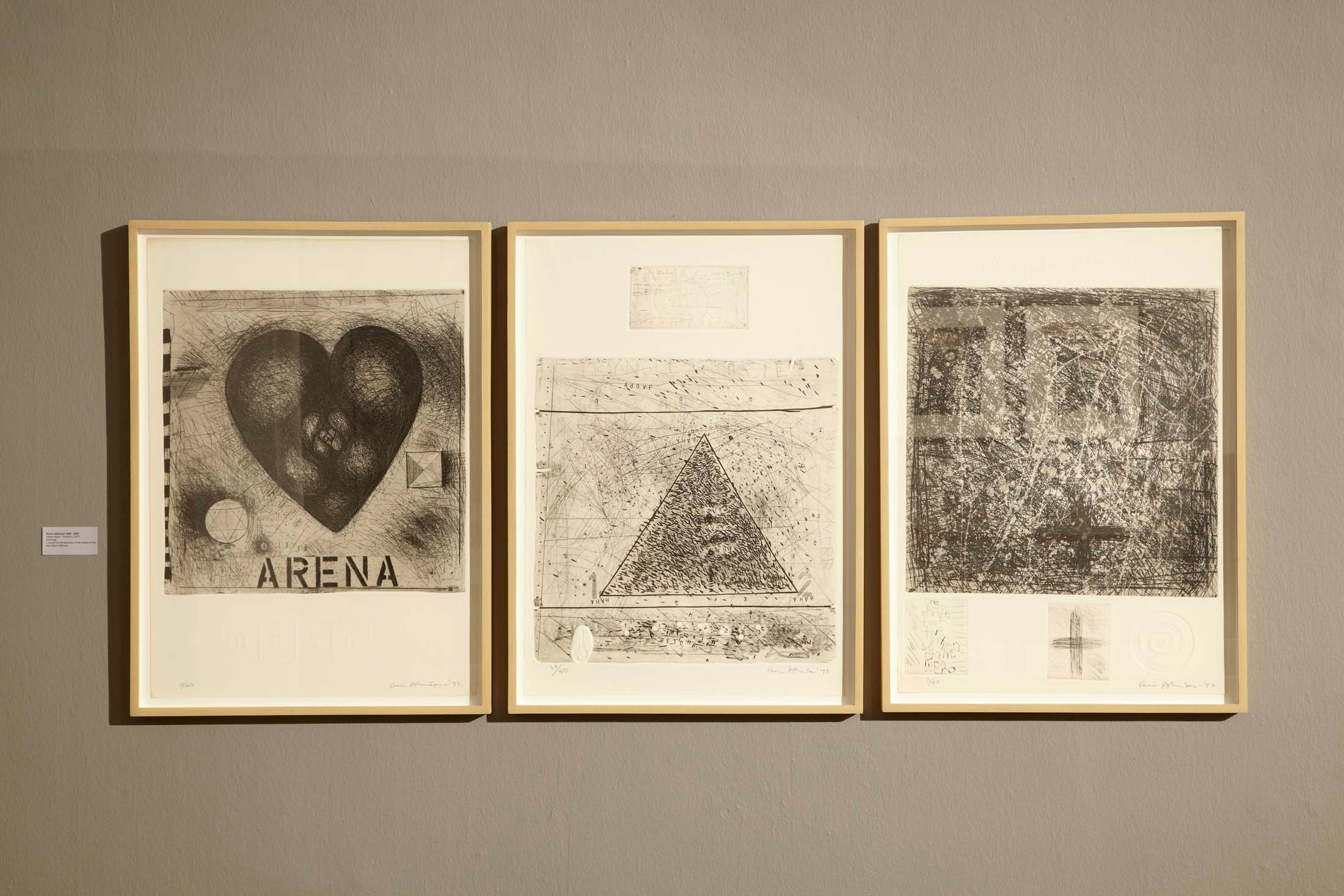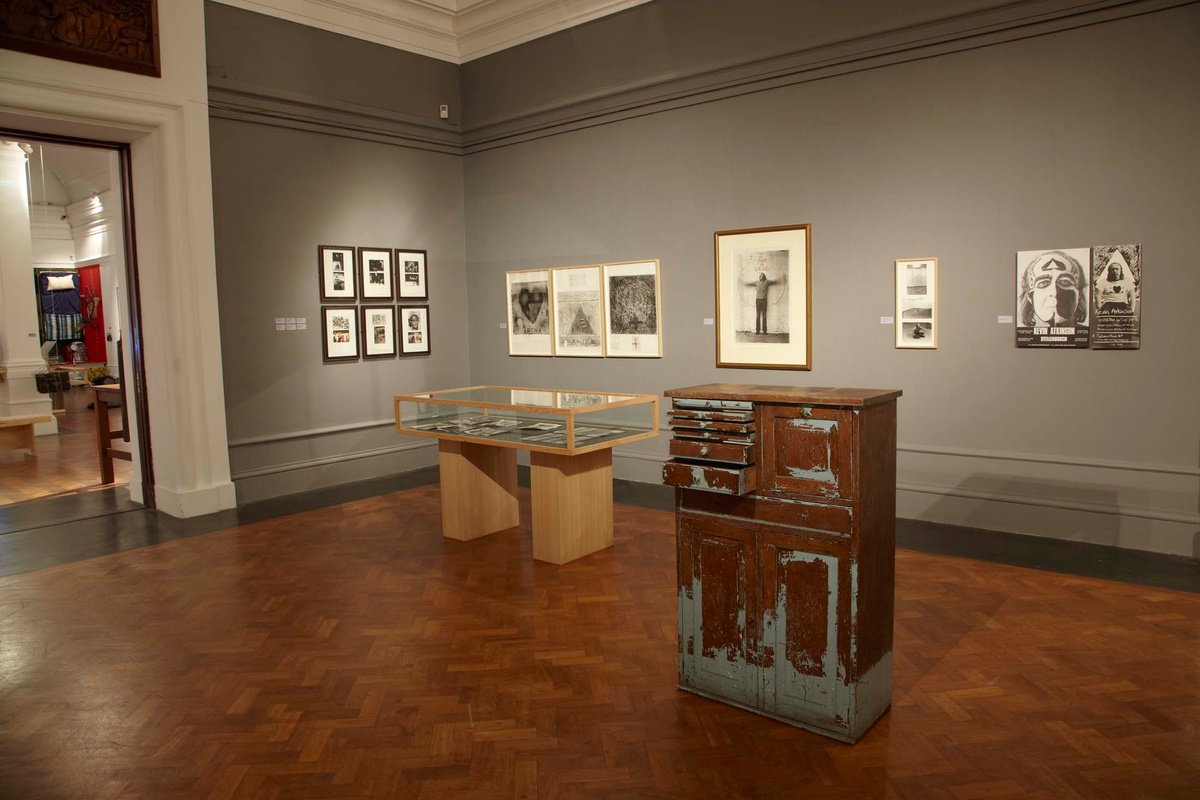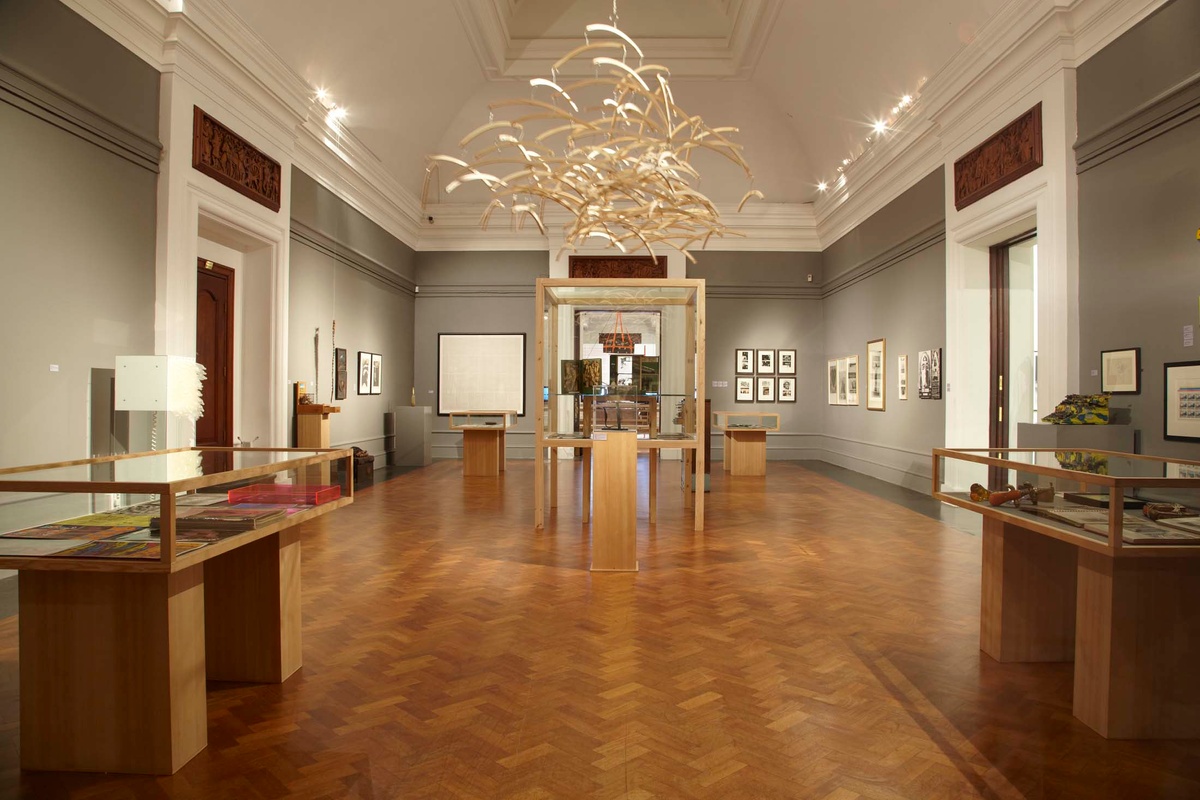Kevin Atkinson

This artwork was loaned to the exhibition Dada South? Experimentation, Radicalism and Resistance curated by Kathryn Smith and Roger van Wyk, Iziko South Africa National Gallery, December 12, 2009–February 28, 2010. It is indexed here as part of Smith and Van Wyk’s revisiting of the Dada South? Archive of materials at A4 Arts Foundation.
b.1939, Cape Town; d.2007, Cape Town
In a tribute to Kevin Atkinson, given on the occasion of his memorial in 2007, his former student Marlene Dumas spoke of his profound impact on generations of artists who studied under his tutelage at the Michaelis School of Fine Art, University of Cape Town. “You taught us new ways of thinking and different ways of coming into action,” she said of her mentor, describing his eclectic tastes and stylistic mutability as “postmodern before modern became post.” Atkinson graduated from the same institution in 1962, after which he toured Europe before briefly joining Stanley Hayter’s printmaking studio in Paris, Atelier 17. During this time, he met Marcel Duchamp, with whom he established (by his own account, though nowhere evidenced) a lasting correspondence. Perhaps Duchamp’s conceptual dexterity across mediums inspired Atkinson’s prolific and variable output, or perhaps his rehearsal of Modernism’s movements was revealing of an essential restlessness. Regardless, over the course of his career, Atkinson produced paintings, prints, collages, sculptures, murals, set designs, and public art installations, traversing Minimalism, Op Art, Kinetic Art, Land Art, Pop Art, and Abstract Expressionism. Though he returned to Cape Town the following year in 1963, he continued to travel to Europe and America, engaging with contemporary art discourses outside of South Africa. Reflecting on international influences on local practices in that decade, fellow artist and educator Neville Dubow wrote of the import of cultural ideas and aspirations: “The process has now become less that of an imitation but rather an interpretation of current developments in personal terms.”
Another key figure for Atkinson was Joseph Beuys, whom he met in Kassel at Documenta 5 in 1973, and who described teaching as his greatest work of art. His influence is most apparent in Atkinson’s comingling of painting, performance, and philosophical lesson, as seen in works such as Apparent Paradox (1975) and I Am Verb (1976). Like Beuys, education was indivisible from Atkinson’s artistic life. In 1963, he and his wife Patricia Pierce co-founded the Cape Town Art Centre, “providing studio facilities, tuition, lectures, films, exhibitions and above all, stimulation” for “the child, layman and the professional alike.” He then went on to establish the Cape Town Visual Arts Research Centre and the Cape Town Graphic Workshop in the late 60s and early 70s, respectively. In addition to these efforts, Atkinson taught at his alma mater, Michaelis, for over three decades from 1971 to 1999. Following his retirement, he built ‘Plato’s Cave’, a subterranean studio and archive of his work, kept in trust and preserved for the continued benefit of students, curators, and other audiences.

